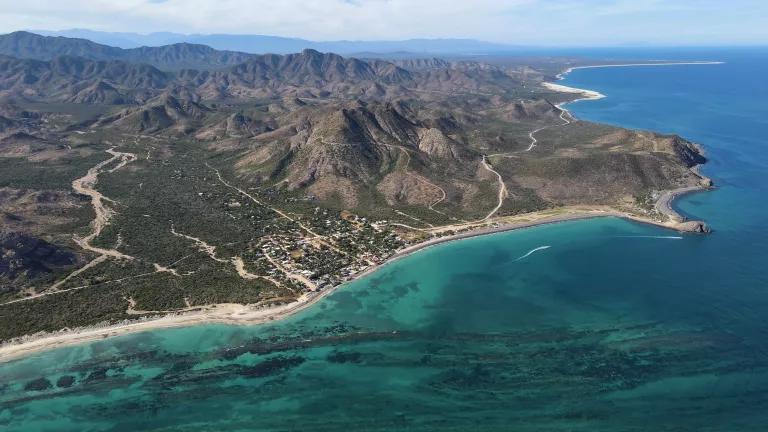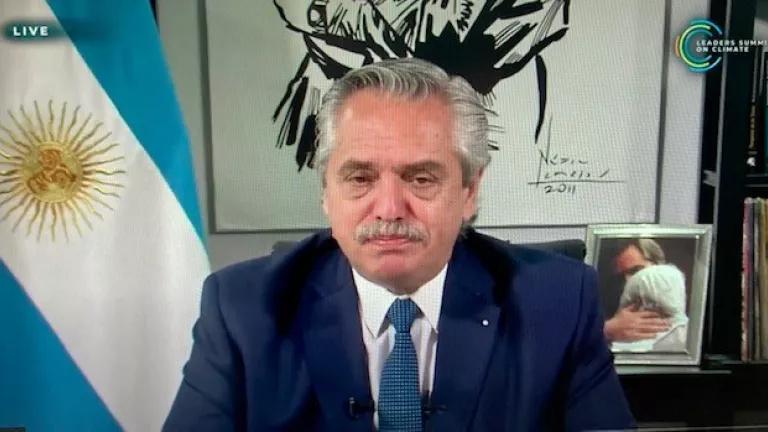
“Victory” is a word I don’t use lightly or often.
But there are few situations I can think of for which “victory” would be more appropriate than yesterday’s landmark announcement by Mexican President Felipe Calderón to cancel the ill-conceived massive tourism project, Cabo Cortés. The project’s proponents wanted to build the equivalent of a new city next to Cabo Pulmo National Marine Park, a reserve of immeasurable importance for Mexico and for the world. Cabo Pulmo contains the only living coral reef in the Sea of Cortés, and for years local, national and international voices have been campaigning to protect the vulnerable marine life there from the threat of Cabo Cortés. Yesterday, just as the Río+20 Earth Summit got underway, President Calderón demonstrated vision and leadership by cancelling the entire project.
Cabo Pulmo is a conservation success story of local, national, and international significance. In the 1970s-80s, rampant overfishing severely degraded the reef. Local communities recognized that fact, and petitioned the government to make the area a national park, which it did in 1995. In 2005, UNESCO named Cabo Pulmo National Marine Park a World Heritage Site, and in 2008 it became a Ramsar Wetlands Site of International Importance.
Due to these efforts, the coral reef has bounced back beyond belief. A 2011 study from the Scripps Institute of Oceanography found that the biomass of the park increased 463 percent in the decade from 1999 and 2009, and called it “most robust marine reserve in the world.” It is now home to the highest concentration of marine life in the entire Gulf of California, including more than 200 species of reef fish, many of which are found nowhere else in the world, as well as migratory species like whale sharks, Pacific manta rays, humpback whales, and dolphins. Five of the world’s seven endangered species of sea turtle use the reef as a refuge. This incredible recovery is largely due to the efforts of the local communities, who took stewardship of the park and reoriented their economies away from destructive fishing practices and towards ecotourism activities.
However, several years ago, the Spanish real estate developer Hansa Urbana laid out plans for the Cabo Cortés real estate and tourism complex. The company planned to construct 13,000 housing units, 3,655 hotel rooms (together this is equivalent to about 30,000 rooms), some 2 million square feet of office and commercial space as well as a 490-slip marina, a “private” jet port, schools, and at least two golf courses. For all practical purposes the project would have created a brand new city the size of Cancun. If it had been allowed to proceed, the project would have irreversibly damaged the reef ecosystem and wiped out local livelihoods that depend on ecotourism.
In response to Cabo Cortés threat, local groups organized and took action. Regional and national groups joined the fight, and created a vibrant coalition called Cabo Pulmo Vivo. When Hansa Urbana stepped up its pressure on the government to approve the project, this coalition did not back down. Instead, they reached out to international groups, such as NRDC, to help protect Cabo Pulmo. Together, we made the legal, scientific, environmental, social and financial cases against the project:
- the project’s plans and the environmental permitting process it underwent both broke municipal and national laws;
- the construction and operation of Cabo Cortés would devastate the thriving marine life of the coral reef;
- it would affect the fish populations that local commercial and sport fishermen depend on;
- a resort of that size would require an incredible amount of fresh water that arid Baja California just doesn’t have;
- and it would have been a very risky investment for anyone interested in financing the project due to all of the above reasons and the shaky financial situations of the developer.
By all accounts and measures, Cabo Cortés was undoubtedly a problematic project that should have been rejected by the government from Day One. Yet its environmental review process, which began in 2008, went on for four years. After some legal back-and-forths between proponents and opponents of Cabo Cortés, major pieces of the overall project received their approvals in January 2011. However, a few crucial parts, such as the water treatment and desalination plants, were conditioned: the company had to provide ample additional information about them within a certain timeframe (most of the 20 conditions allowed for six months). Last week, our Mexican partners made public a memo from the Sectary of Environment and Natural Resources stating that Cabo Cortés was out of compliance with many of those conditions, providing the government with the perfect opportunity to cancel the irresponsible project altogether. President Calderón’s declaration cancelling the project is an acknowledgement of the fact that big business isn’t always the best business.
Cabo Pulmo truly is a treasure worth preserving, and a model of environmental stewardship and local economic growth worth replicating. After years of effort from many parties, yesterday’s victory –and certainly it is a victory— is remarkable news for the people of Cabo Pulmo and Mexico, and for other countries, too. It is proof that these battles can be won, and that when they are won, they have impacts far beyond the immediate area. Of course, there is still work to do to ensure that new projects similar to Cabo Cortés do not threaten Cabo Pulmo again, as surely they will, and that the region is able to grow economically and sustainably. But now is a time for celebrating – and to say “Gracias” to President Calderón for making the right decision.



